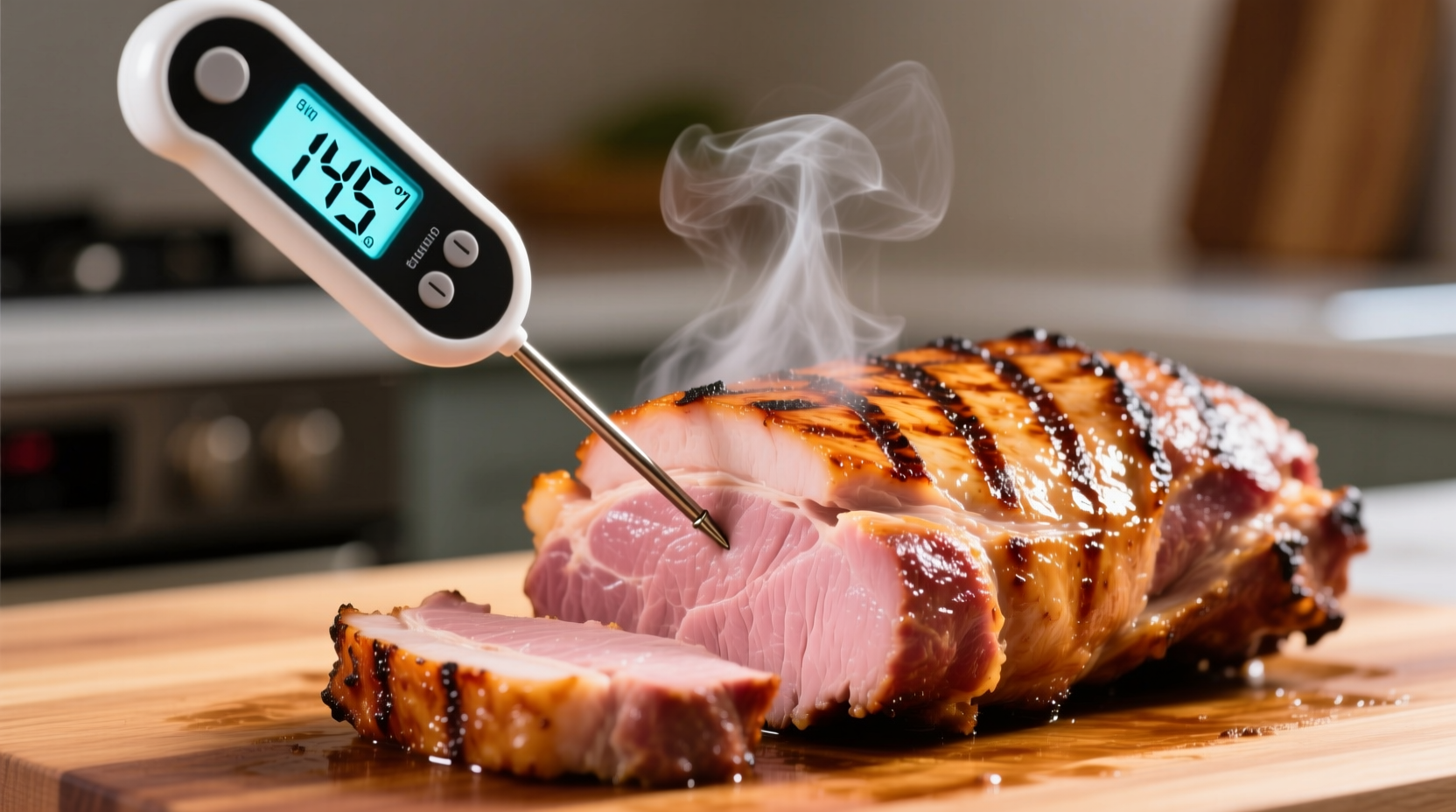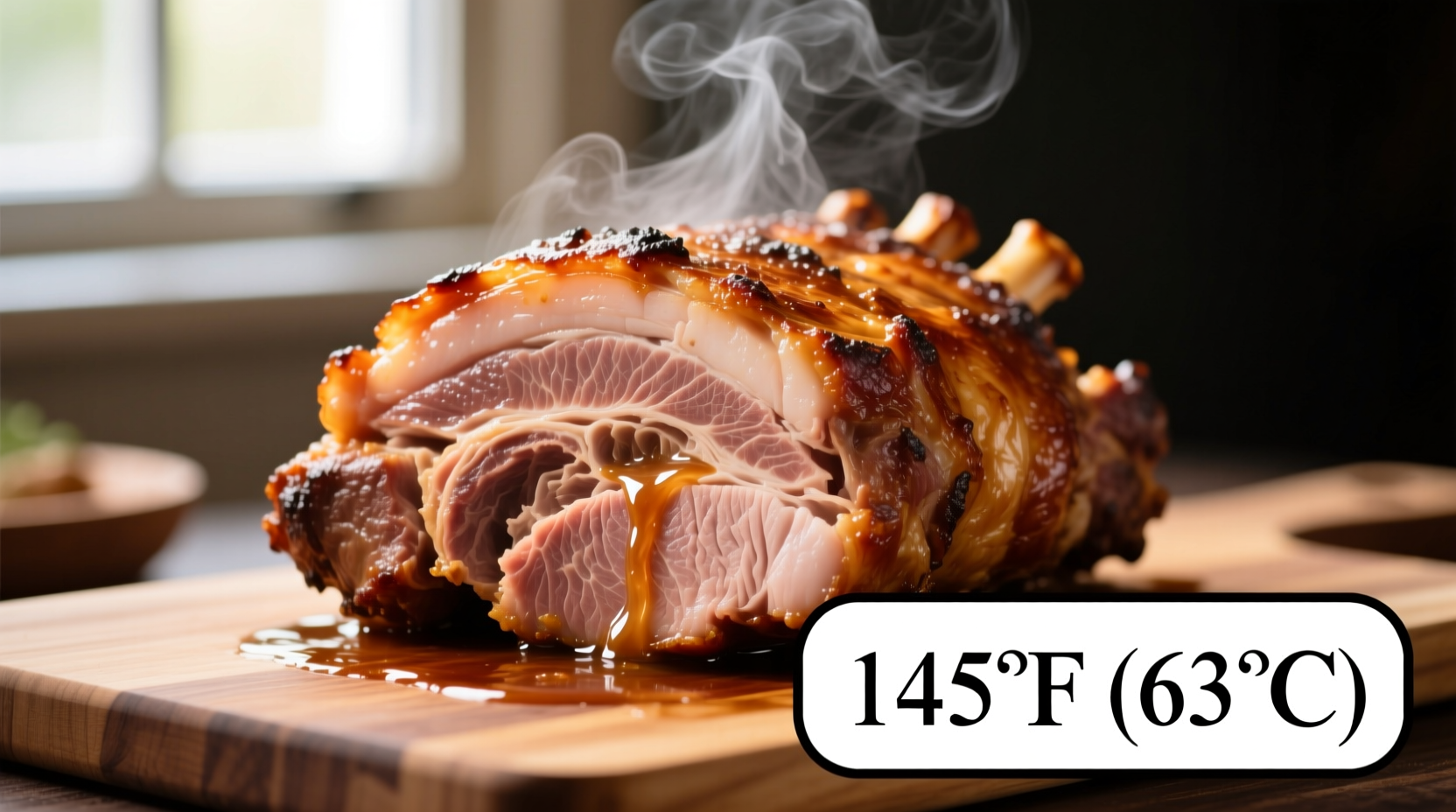Pork must reach a minimum internal temperature of 145°F (63°C) with a 3-minute rest period for safe consumption, according to USDA Food Safety and Inspection Service guidelines. This applies to whole cuts like loin, chops, and tenderloin. Ground pork requires 160°F (71°C). Always verify with a calibrated meat thermometer.
Why Pork Temperature Matters: Safety Beyond Guesswork
Getting pork temperature right isn't just about doneness—it's your primary defense against foodborne illnesses like Salmonella and Trichinella. While modern farming has nearly eliminated trichinosis risks in commercial pork, precise temperature control remains critical for vulnerable populations. The USDA's 145°F standard balances safety with optimal texture, preventing the dry, overcooked results that plagued earlier recommendations.
The Science Behind the 145°F Standard
Understanding why 145°F works requires examining pork's microbial safety profile. At this temperature:
- Pathogens like Salmonella are instantly destroyed
- Trichinella parasites (now rare in US pork) die within seconds
- The 3-minute rest period allows residual heat to distribute evenly
This standard emerged from extensive research by the USDA's Food Safety and Inspection Service. Their comprehensive pork safety guidelines reflect decades of food science evolution, moving beyond outdated 160°F recommendations that sacrificed quality unnecessarily.
Pork Temperature Evolution: A Timeline of Safety Standards
Safe pork temperatures have evolved significantly as food science advanced:
| Time Period | Recommended Temp | Key Scientific Development |
|---|---|---|
| Pre-1980s | 170°F+ | Trichinosis concerns from outdoor-raised pigs |
| 1980s-2011 | 160°F | Indoor farming reduced parasite risks |
| 2011-Present | 145°F + 3-min rest | USDA validation of pathogen kill temps at lower heat |
This shift, formalized in the 2011 USDA Temperature Guidelines Update, demonstrates how evidence-based science continuously refines food safety practices.
Temperature Requirements by Pork Cut
Not all pork cuts share the same temperature requirements. Always verify with a thermometer:
| Pork Cut Type | Safe Internal Temp | Rest Period | Special Considerations |
|---|---|---|---|
| Whole cuts (loin, chops, tenderloin) | 145°F (63°C) | 3 minutes | Insert thermometer into thickest part away from bone |
| Ground pork | 160°F (71°C) | None | Surface pathogens distributed throughout during grinding |
| Pork shoulder (pulled pork) | 195-205°F (90-96°C) | 20+ minutes | Higher temp needed to break down collagen for shredding |
How to Measure Pork Temperature Correctly
Accurate measurement prevents both undercooking and dryness:
- Use a digital instant-read thermometer (tested for accuracy in ice water)
- Insert into the thickest part avoiding bones, fat, or grill grates
- Check multiple spots in larger cuts like roasts
- Wait for stabilization – don't pull immediately when target temp hits

Many home cooks fail by relying on color or texture cues. Pinkness in properly cooked pork is normal and doesn't indicate undercooking – only thermometer readings provide certainty. The USDA explicitly states: "Color is not a reliable indicator of doneness for pork."
Common Temperature Mistakes and How to Avoid Them
Even experienced cooks make these critical errors:
- Skipping the rest period: Cutting immediately causes juice loss and temperature drop below safe zone
- Thermometer placement errors: Inserting near bone gives falsely high readings
- Assuming oven temp = meat temp: Environmental factors significantly impact actual internal temperature
- Using uncalibrated tools: Test thermometers monthly in ice water (32°F/0°C)
Special Considerations for Vulnerable Groups
While 145°F is safe for healthy adults, adjust for higher-risk situations:
- Nursing homes/hospitals: Cook to 160°F for all pork products
- Pregnant individuals: Avoid medium-rare pork; use 160°F standard
- Immunocompromised persons: Follow FDA Food Code's 155°F+ recommendations
These context boundaries reflect the FDA's Food Code guidelines for institutional food service, prioritizing maximum safety where consequences of illness are severe.
Practical Temperature Verification Checklist
Before serving pork, complete this safety verification:
- Confirm thermometer calibration in ice water
- Measure at thickest section away from bone
- Verify reading matches USDA standard for cut type
- Observe full rest period before cutting
- Discard if temperature falls below safe threshold
Frequently Asked Questions
Is 145°F safe for all pork cuts?
145°F applies to whole muscle cuts like chops and tenderloin. Ground pork requires 160°F because grinding distributes surface pathogens throughout the meat. Pulled pork needs higher temperatures (195-205°F) to break down connective tissue.
Why does pork need to rest after reaching 145°F?
The 3-minute rest allows residual heat to distribute evenly (carrying-over cooking), ensures pathogens are fully destroyed, and lets muscle fibers reabsorb juices. Cutting immediately causes significant moisture loss and may drop internal temperature below the safe zone.
Can I rely on pork's color to determine doneness?
No. The USDA explicitly states color is unreliable for pork doneness. Factors like pH, cooking method, and nitrates can cause pinkness even at safe temperatures. Only a calibrated meat thermometer provides accurate safety verification.
What's the difference between USDA and FDA temperature guidelines?
USDA regulates meat products (145°F for whole pork cuts), while FDA oversees food service establishments. FDA Food Code recommends 155°F for pork in commercial kitchens to account for thermometer variance. Home cooks should follow USDA's 145°F standard with proper thermometer use.











 浙公网安备
33010002000092号
浙公网安备
33010002000092号 浙B2-20120091-4
浙B2-20120091-4